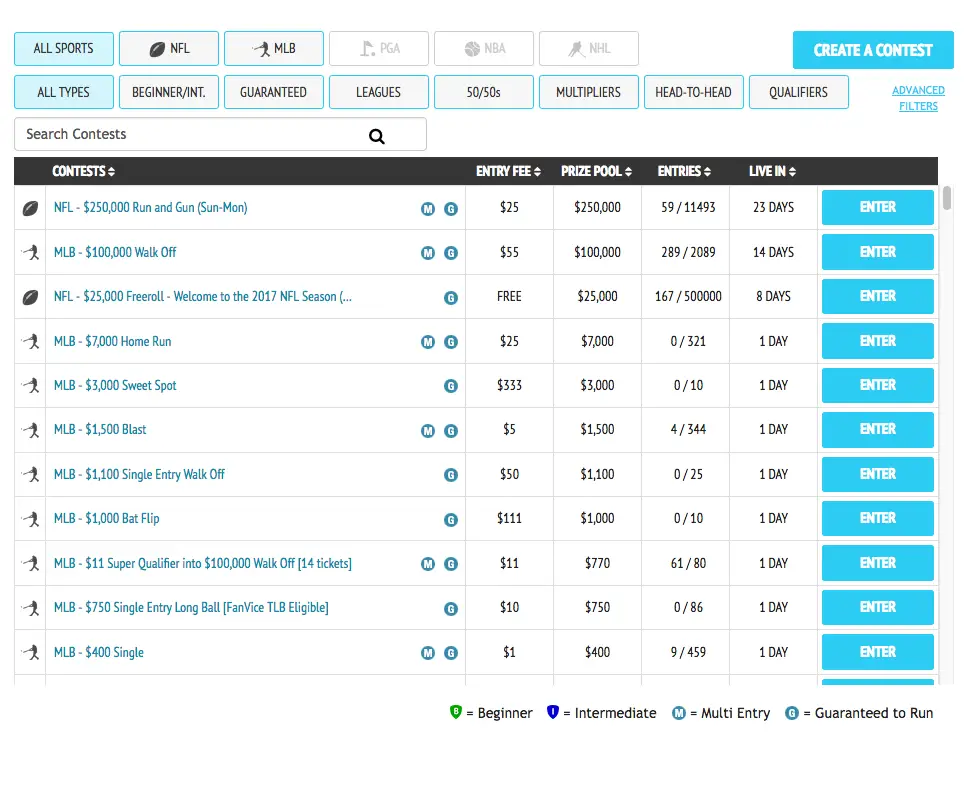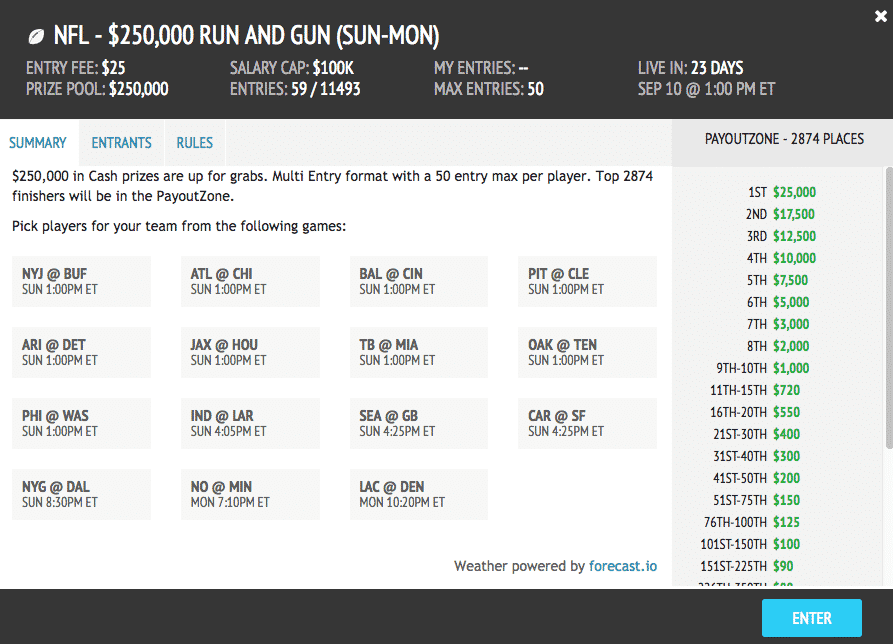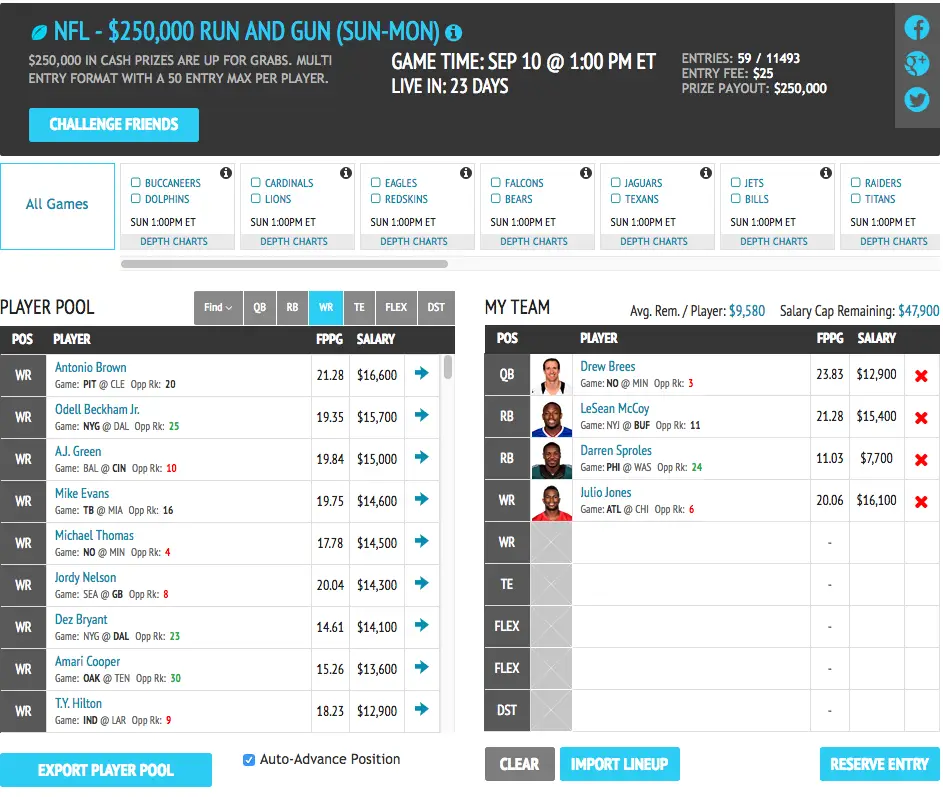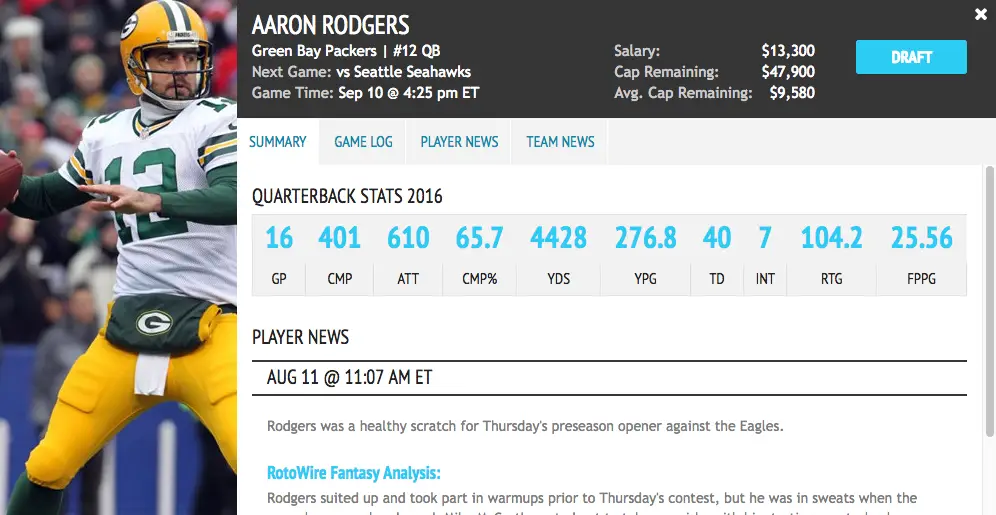FantasyDraft.Com Review (CLOSED)
Update: FantasyDraft was acquired by MonkeyKnifeFight.com (now closed) in September 2020. All customer balances were kept safe during the transition, and former FantasyDraft customers were provided the option to transfer their funds to a new or existing MKF account. To sweeten the deal, MKF offered a free $100 full season contest entry to all FantasyDraft players who took the offer to transfer their funds over. However, Monkey Knife Fight also closed in 2023, although it also paid customers’ balances in full.
FantasyDraft.com opened in 2014 and was once one of the bigger sites in the daily fantasy industry. It faced stiff competition from the likes of FanDuel DFS and DraftKings DFS but offered a unique take on DFS.
In July 2019, FantasyDraft unleashed a totally new model to become the first rake-free fantasy site. Rather than charging rake like every other mainstream DFS site, FantasyDraft.com operated on a subscription model with fixed monthly costs. This means you picked your plan, paid a monthly fee, and never paid rake again.
The subscription plan was attractive for two reasons. First of all, it was significantly cheaper over the long run. As the FantasyDraft homepage noted, rake can eat up as much as 30% of an average player’s bankroll over time. This also means FantasyDraft paid back 100% of all contest entry fees to players in the form of prizes.
Second, the subscription plan was a fixed cost that you could predict and account for. As a player, you knew exactly how much it was really costing you to play in all those contests, and you could much more easily track your results.
Rake is a clever way for fantasy sites to turn a profit because it’s on not as obvious as charging a flat monthly fee, but it adds up quickly. The Fantasy Draft model was transparent and easy to comprehend. There were numerous plans to choose from (detailed below) and plans could be swapped out any time.
Moving beyond the subscription model, FantasyDraft was at its core a normal daily daily fantasy app. You had a virtual salary, drafted players for your team, and accumulated points based on your athletes’ real-world performances.
FantasyDraft Subscription Plans
FantasyDraft offered rake-free fantasy contests as advertised, but those were replaced with two other costs. First were the various subscription plans as detailed below. Second, all deposits were subject to a 3% “processing fee.”
It wasn’t free, but choosing the right plan could potentially save fans quite a bit of money over the long run. Here are the seven plans players could choose from:
| Plan Name | Cost Per Month | Entry Fees Waived Each Month |
|---|---|---|
| Playersfirst | $0 | $100 |
| Starter | $5.99 | $1,000 |
| All-American | $14.99 | $3,000 |
| Professional | $49.99 | $10,000 |
| All-Star | $99.99 | $25,000 |
| MVP | $499.99 | $100,000 |
| Hall Of Fame | $999.99 | Unlimited |
When you signed up for a FantasyDraft account, you were asked to select one of the above plans. If you were new to DFS or weren’t sure how much you’ll really play, the Playersfirst plan was an easy first choice. This one cost absolutely nothing and waived up to $100 worth of entry fees every month.
To be clear, you still paid to enter costs under any plan – you were just not charged any rake. This means if 10 people join a $10 contest, the total prize pool would be the full $100 as all winnings were paid back to contestants. Likewise, 50/50 contests actually paid a full 2x your entry in winnings to the top 50% of the field.
You could also adjust this as you gained experience to better tailor your plan to your needs. If you logged in to your FantasyDraft account, visited settings and enabled “Show Entry Fees Paid,” you could then go to your My Contests page to see how much you have paid in rake so far. With this, you could see how quickly you’ve been going through your monthly allotment of waived fees and adjust your membership plan accordingly.
FantastyDraft Deposit Bonus
FantasyDraft.com offered a free $4 entry ticket with your first deposit. After you signed up for an account and made a deposit, you received an entry to a $4 contest of your choice.
Joining Contests And Drafting Teams
The main lobby is where you went to join contests and draft teams. This part of the website was organized in a pretty straightforward manner. You could filter the games by league, contest type, entry fee, prize pool, and number of entries allowed.

When you saw a contest you liked, you could click on its name, and a summary would appear with all the details: the payout structure, a list of games included in this contest, a list of entrants, scoring rules, and a start date.

Next, it was time to draft your team. In the NFL, you received a salary of $100,000 to draft nine players. Each player was priced according to his perceived strength, the average number of fantasy points earned, and so on. FantasyDraft NFL rules required you to remain within the salary cap, fill all nine positions, draft players from at least three teams, and have fewer than six players from any one team.
As you added players to your team, the roster would update itself to show how much salary you had remaining and the average amount you had left to spend on each player.

You could also click on any player’s name to see a summary of that player. The summary displayed that player’s stats for the season, average number of fantasy points scored, how that player looked against the upcoming opposing team, and recent news for that player.

FantasyDraft Contests
FantasyDraft.com had a standard lineup of contest types. All contests were hosted in the salary cap format, but there were differences in how many entries were accepted and how payouts were awarded.
- Leagues: The leagues accepted anywhere from 3 to 20 players. Payouts were awarded as either “winner take all” or with payouts for the top few players. You could join leagues created by other people or host your own with custom rules for size, entry fee, and number of paid places.
- Tournaments: Tournaments were just like leagues except bigger. The biggest tournaments accepted thousands of entries and paid significant prizes to the top performers. If you wanted to try to strike it big, tournaments were the way to go.
- 50/50s: 50/50 contests accepted multiple entries and doubleed the money of the top 50% of the field. All you had to do is place in the top 50%, and you won double your entry.
- Head-to-Head: A head-to-head contest pitted you against exactly one other person. Whoever ended up with the most points won the entire prize pool.
- Beginner: Beginner contests were for the rookies of FantasyDraft. These contests were only open to people who have participated in fewer than 60 contests.
- Guaranteed: Guaranteed contests published a prize pool in advance and ran no matter how many people entered the contest.

